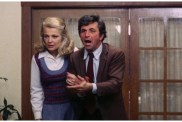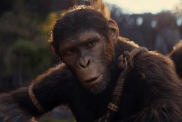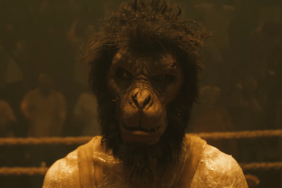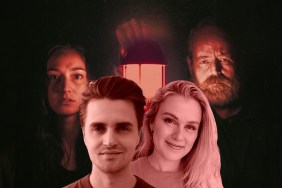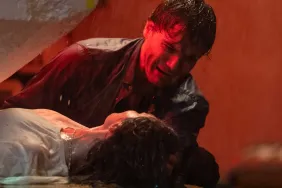For part 1 of this indie horror journal that looks at the making of Child Eater, click here. For part 2, click here. For part 3, click here.

After nearly a month in Catskill, New York, we’ve completed three weeks of principal photography on Child Eater and have just a single day of shooting left to go. But before we make our way down to New Jersey to shoot the hospital portion of the script, it’s well worth revisiting certain experiences from the past week because it was certainly the most challenging of the shoot.
Lesson 1: Weather Sucks
One of my favorite parts about being a producer is problem solving. Something goes wrong and you fix it; it’s that simple. However, no matter how hard you work, for the most part, there’s just nothing you can do about weather. When we put together our shooting schedule back in March, we had a number of things we needed to schedule around. At that point, the priorities were an actress that we had to fly in from Los Angeles for a short period of time and also accommodating the day-set and night-set material in a way that our call times would get later and later each day so that our cast and crew had a proper turnaround. A few days in, something else took precedence – our child actor. He had to be wrapped by 10pm on school nights and midnight on weekends, and as unforeseen factors forced us to make changes to the schedule, we absolutely ran the risk of jeopardizing that requirement.
Once we got that under control, something else cropped up – locations. Our two primary locations are “The Parker House” and “The Game Farm.” No matter where we go, we have to set up base camp and that includes tents, craft service, lights, generators, the RV, and loads more. It’s vital that base camp is set up before call time so that means certain members of production are getting up hours earlier than everyone else to get the job done. By rearranging our schedule yet again to make the second week of work primarily in the Parker House and the third week in the Game Farm, we decreased some of those extra hours. Trouble is, the Parker House had the large majority of our interior locations whereas the Game Farm was mostly night exteriors, so that meant for this last week of filming, we’d always run the risk of getting slammed by rain.We prepped as much as we could by renting tarps, extra tents and other weather-resistant items, but even then, you just can’t shoot in a downpour for multiple reasons including safety and continuity. Even though there was quite a bit of rain in the forecast at the start of the week, luckily, we only had to wrap early on a single night due to weather, but it absolutely wasn’t worth the risk. Cover sets are vital.

Lesson 2: Budget Extra Time for Stunts
We’ve had stunts throughout the entire shoot, but this week was particularly heavy on action. In our case, there were two key things to consider when nailing our stunts – the amount of time it takes to get them right and also the amount of coverage they require, both of which can certainly eat into your day. Fortunately we were able to recruit an ace stunt coordinator, the incomparable Drew Leary, and he helped us power through the material at a rapid fire pace, but even then, it still takes time.One oversight regarding stunts was scheduling them late in the day. At one point this week, we were fighting the sunrise, rushing to complete a fight. Fortunately, between Drew and a few swift moves from our cast and crew, we got it done and, oddly enough, the manic nature of the work wound up serving the material rather well, but there’s still no denying that a little extra breathing room would have made the sequence a bit more manageable – and calmed my nerves quite a bit, too.

Lesson 3: Communication is Key
This is one of the biggest lessons I’ve learned making my first feature film. Shorts require fewer crewmembers, plain and simple. They still break down to individual departments and are responsible for their own work, but, based on my experiences, the group is small enough that you naturally move as a single unit. On features however, that’s incredibly tough to achieve.
With more people and more work involved, everyone is hyper focused on their own to do lists because that’s the only way to get it all done in time. However, there’s absolutely no way any member of the company can operate with tunnel vision. Whether you’re part of the art department, the cast or even grip and electric, at some point, your jobs will cross over. The trouble is, they can only cross over so much. It’s not about one department assessing another’s work. It’s about collaborating to maximize each other’s efforts in order to ensure a smooth, successful shoot.In our case, there was just enough communication to get through most of the material, but there’s no doubt that had we had regular meetings for department heads, we could have been more efficient about our work.

Lesson 4: Reshoots Happen
And that brings us to one of the hardest things to accept; sometimes, you just need a reshoot. Even though we’re wrapping principal photography at the end of the day on Tuesday, April 29th, there will be sequences that still need to be shot. As we got closer to biting the bullet and accepting the fact that we’d need more time down the line, we started restructuring the schedule yet again so that when that time does come, we can put the shoot together on a budget and also get the most out of those days. For example, we strove to shoot out the buildings at the Game Farm so that even though we still have material set in the Game Farm woods to plow through, those woods can be in the most convenient place possible.
Of course it would have been nice for the day to come to a close on Tuesday and know that we’re all done, but, as someone on the crew pointed out, this could be a blessing in disguise. If we push this reshoot to the end of May or June, that will give Erlingur enough time to do his first cut, figure out what else might be missing and then we can bang it all out in one shot. Plus, time is precious. Even if we did manage to squeeze these missing sequences into the principal photography schedule, there’s no doubt that they would have been rushed. Now, however, we know how fast we operate and what it takes to get certain moments done and can put ourselves in the best possible conditions to complete the film and insure these last portions of the film are of the highest quality.
